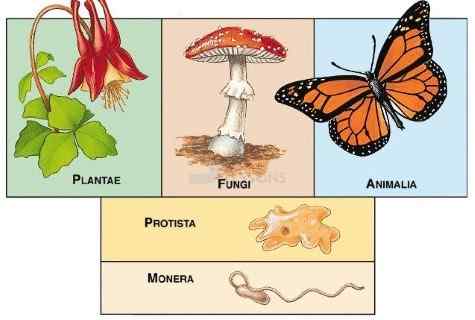 Introduction
Introduction
Q. What is Biological Classification of Plants and Animals?
Ans: Biological classification of plants and animals was first proposed by Aristotle on the basis of simple morphological characters. Linnaeus later classified all living organisms into two kingdoms - Plantae and Animalia. Whittaker proposed an elaborate five kingdom classification - Monera, Protista, Fungi, Plantae and Animalia.
 Classification
Classification
The main criteria of the five kingdom classification were cell structure, body organisation, mode of nutrition and reproduction, and phylogenetic relationships (evolutionary development and diversification of a species).
Image: Five kingdom Classification
Source: NCERT Text Books
At present, the biological classification includes:- 1. Kingdom Monera
2. Kingdom Protista
3. Kingdom Fungi
4. Kingdom Plantae
5. Kingdom Animalia
6. Viruses, Viroids and Lichens
- In the five kingdom classification, bacteria are included in Kingdom Monera.
- Kingdom Protista includes all single-celled eukaryotes such as Chrysophytes, Dinoflagellates, Euglenoids, Slime-moulds and Protozoans.
- Members of Kingdom Fungi show a great diversity in structures and habitat. Most fungi are saprophytic in their mode of nutrition.
- The plantae includes all eukaryotic chlorophyll-containing organisms. Algae, bryophytes, pteridophytes, gymnosperms and angiosperms are included in this group.
- The heterotrophic eukaryotic, multicellular organisms lacking a cell wall are included in the Kingdom Animalia.
- Some acellular organisms like viruses and viroids as well as the lichens are not included in the five kingdom system of classification.






